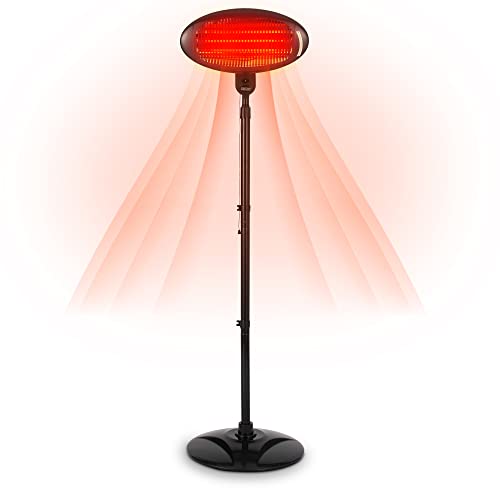You Can Explain Patio Heat Lamp Electric To Your Mom

How to Choose a Patio Heat Lamp Electric
There are many options available when it comes to heating your patio. In contrast to propane heaters that require refills electric heaters can provide instant heat by simply flipping a switch or pressing the button.
They also don't emit gases that could cause health risks. Some have adjustable settings for heat for varying distances.
Heater Type
You can relax in your outdoor living space all through the evening and throughout the year by using the right patio heater. Patio heaters are available in a variety of different types that include freestanding propane or natural gas models, as well as ceiling or wall mounted electric radiant heaters. The choice you make will depend on the dimensions of the space, the power sources and personal preference.
The majority of patio heaters use electricity, natural or liquid gas to generate heat. They emit heat via a combination convection heating and radiant heating. The heat output is measured in watts and can be converted to British thermal units (BTUs) to compare. Some models have adjustable heating settings to allow for greater flexibility.

A patio heat lamp is a burner on top of a pole with a perforated screen that reflect the flames and sends the heat downwards to warm people, furniture and other objects. Some patio heat lamps come with reflective reflectors that sit on top of the burner and can be silvered to limit the amount of heat is lost upwards.
The most popular kind of patio heater that is a gas patio heater is usually found in outdoor seating areas at restaurants and bars as they produce a lot of heat quickly and distribute it evenly in all directions. They are great to heat tables. These heaters are portable and run off a propane tank or plumbed into your natural gas line with the latter providing more convenience and lower installation costs, but also requiring an ongoing cost of fuel.
A increasing number of homes are fitted with natural gas lines, which makes them the ideal solution for those who prefer using a gas-powered patio heater. Fireplaces And Stoves are easy to install, however they require an appropriate gas line properly installed and working to be secure. Natural gas heaters that are portable come with extension hoses to help overcome this issue, however they can pose a tripping risk and can create an additional fire hazard when not being used.
Safety
Most electric patio heaters are suitable for use in covered areas since they allow heat to radiate outward, instead of upwards toward combustible materials like the roof. They are not designed to be used under a non-protected roof. The heater should be placed at least 6" away from the ceiling, or 18" away from the wall adjacent to avoid fire hazards.
The propane and gas patio heaters are only suitable for installation in enclosed areas with an enduring cover designed for outdoor use. These covers are usually made of fire-resistant fabrics and have a roof which can be closed. These kinds of patio heaters have safety concerns related to the flames and fumes they generate. They should be placed away from flammable items, such as curtains and chairs.
When installing a patio heat lamp electric or any other type of patio heater, make sure you adhere to the manufacturer's instructions and safety measures carefully. Make sure you select the one with UL and CSA certifications, and read the owner's guide carefully. Be sure that the heater is out of the reach of pets and children. Some patio heaters that stand on their own like EUROM's come with an automatic tipping safety that shuts off the device when it falls.
If your patio heater runs on a natural gas line it is essential to inspect the condition of the line on a regular basis and test it for leaks by an experienced professional. If the line requires to be replaced, make certain to get an authorized plumber. A professional can determine whether the line is properly routed or should be routed through an underground pipe. A professional can also make sure the heater in the patio is plugged into an outlet that's GFCI (ground fault circuit interrupter) designed to guard against electrical fires and shocks.
Installation
The height at which a patio heater is positioned determines the amount of heat it can radiate into the space. The heater should be placed away from any surfaces such as wood and plastic that can deform. The heater can be mounted on a structure, wall or any other surface with standard mounting brackets. Certain models come with soft starters that reduces the peak current to ensure your circuits are protected.
